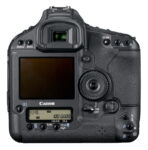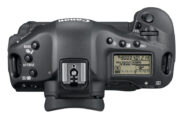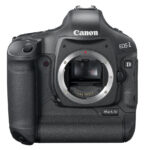Announced
Production status
System
Canon EOS system cameras
- Canon EF-M
- Canon EOS 10 S
- Canon EOS 10D
- Canon EOS 1D
- Canon EOS 1D mark II
- Canon EOS 1D mark II N
- Canon EOS 1D mark III
- Canon EOS 1D mark IV
- Canon EOS 1D X
- Canon EOS 1D X Mark II
- Canon EOS 1D X Mark III
- Canon EOS 1Ds
- Canon EOS 1Ds mark II
- Canon EOS 1Ds mark III
- Canon EOS 3
- Canon EOS 3000
- Canon EOS 5000
- Canon EOS 5D
- Canon EOS 5D mark II
- Canon EOS 5D mark III
- Canon EOS 5D mark IV
- Canon EOS 5Ds
- Canon EOS 5Ds R
- Canon EOS 620
- Canon EOS 630
- Canon EOS 650
- Canon EOS 6D
- Canon EOS 6D Mark II
- Canon EOS 700
- Canon EOS 750 QD
- Canon EOS 850
- Canon EOS A2
- Canon EOS D30
- Canon EOS D60
- Canon EOS ELAN
- Canon EOS ELAN 7E
- Canon EOS ELAN 7NE
- Canon EOS ELAN II
- Canon EOS IX
- Canon EOS IX Lite
- Canon EOS Rebel 2000
- Canon EOS Rebel G
- Canon EOS Rebel K2
- Canon EOS Rebel S II QD
- Canon EOS Rebel T2
- Canon EOS Rebel Ti
- Canon EOS Rebel X
- Canon EOS Rebel XS
- Canon EOS Rebel XS N DATE
- Canon EOS RT
- Canon EOS-1
- Canon EOS-1N
- Canon EOS-1N RS
- Canon EOS-1V
Canon EOS 1D mark IV
APS-H AF digital SLR camera • Discontinued
Specification
| Format: | |
| APS-H | |
Imaging sensor: | 27.9 × 18.6mm CMOS sensor |
Resolution: | 4896 × 3264 - 16 MP |
Crop factor: | 1.29x |
Sensor-shift image stabilization: | - |
| Canon EF [44mm] | |
| Shutter: | |
Type: | Focal-plane |
Model: | Electronically controlled |
Speeds: | 30 - 1/8000 + B |
| Exposure: | |
Exposure metering: | Through-the-lens (TTL), open-aperture |
Exposure modes: | Programmed Auto |
| Aperture-priority Auto | |
| Shutter-priority Auto | |
| Manual | |
| Physical characteristics: | |
Weight: | 1180g |
Dimensions: | 156x156.6x79.9mm |
Manufacturer description #1
The Canon EOS-1D Mark IV features a newly developed 16.1-megapixel APS-H size (27.9 x 18.6 mm) CMOS sensor and Dual DIGIC 4, comprising two high-performance DIGIC 4 image processors, making possible an expanded normal ISO sensitivity* range of 100-12,800 for beautiful image quality with low noise at all settings. The camera also allows an extended ISO range of 50-102,400. Low-sensitivity settings support outstanding results for outdoor portrait-photo shoots under bright lighting conditions or when using large strobe lights in a studio environment, while high-sensitivity settings boost performance when shooting indoor sports action and night games or conducting nighttime photojournalism. The camera makes possible a continuous shooting speed of up to approximately 10 frames per second for up to approximately 121 large JPEG images in a single burst.
The EOS-1D Mark IV’s newly developed 45-point AF (autofocus) sensor, including 39 cross-type AF points with sensitivity up to f/2.8, ensures greatly improved focusing accuracy. Equipped with AI Servo AF II, incorporating a new algorithm, the camera achieves high levels of AF stability and tracking performance.
Manufacturer description #2
London, 20 October 2009 – Canon today announces the launch of the new EOS-1D Mark IV – a high-speed, professional Digital SLR (DSLR) camera designed to empower photographers to capture split-second moments in high resolution, under the most challenging of conditions. Ideal for shooting action, sports, news events and wildlife photography, the Canon EOS-1D Mark IV delivers speed, power and high-resolution images, creating the perfect camera for photographers who require reliability in fast-paced, high-pressure situations.
Developed incorporating feedback from professional photographers, the EOS-1D Mark IV features a new Canon 16.1MP APS-H CMOS sensor and a brand new 45-point Auto Focus (AF) system with 39 f/2.8 sensitive cross-type points, providing a wide selection of precise focus areas across the frame. Dual “DIGIC 4” processors provide the power to shoot continuous, high-resolution images at up to 10 frames per second (fps), as well as delivering the widest ISO range ever to feature in a Canon camera.
“Throughout the EOS-1D Mark IV’s development, we’ve carefully studied feedback from our photographers and developed a camera to meet their specific requirements” said Mr. Shinbori, Senior General Manager of Camera Development Center, Canon Inc. “With a brand new, high-quality CMOS sensor and Dual “DIGIC 4” processors, the Canon EOS-1D Mark IV allows photographers to be the first to get the highest quality images to picture desks in what is becoming an increasingly competitive market.”
Highly sensitive, cross-type focusing – capture every detail at speed
The Canon EOS-1D Mark IV features a completely new 45-point AF system, with 39 f/2.8 sensitive cross-type points located across the frame, providing consistent AF on static or moving subjects, no matter which AF point is being used. All 45 AF points are user selectable and now more sensitive, with the AF points towards the edge of the frame offering identical levels of performance to those in the centre.
The entire AF system is managed by a dedicated microprocessor, providing fast, accurate focusing – even when shooting continuously at 10fps. Canon’s newly-evolved AI Servo II AF offers more precision when tracking moving objects, utilising the power provided by the dedicated microprocessor to improve overall tracking accuracy and increasing focus reliability in low-contrast and extremely bright conditions.
To provide increased flexibility, a vast range of manual and automatic AF control options are available including - with lenses featuring an AF Stop button - Canon’s new Spot AF feature. Spot AF offers a more precise focus area to meet the needs of photographers that require pinpoint focusing. A 63-zone metering system enables the use of multiple metering modes, with the dedicated sensor linked to the 45 AF points, providing AF point-linked and multiple spot metering options.
The EOS-1D Mark IV also features orientation-linked AF points, an orientation sensor controlled feature that enables photographers to store separate AF points for different camera positions. Covering both horizontal and vertical shooting positions (both grip up and grip down), orientation linked AF points offers the flexibility to quickly change camera orientation when shooting with the AF settings switching to suit the subject. AF point registration enables the photographer to store an alternate AF point that can be used at the touch of a button.
The power and performance of Dual “DIGIC 4” and CMOS
The combination of a custom-designed, high resolution 16.1MP APS-H CMOS sensor and Dual “DIGIC 4” processors ensures that detailed, crisp images are delivered at high speeds.
The inclusion of an APS-H sensor combines a high pixel-count with an effective field of view measuring 1.3x the focal length of the lens. This provides immediate benefits for sports, news and wildlife photojournalists, who operate on-the-move and need to get closer to their subjects and maintain fast apertures without resorting to longer focal-length lenses – which are typically heavier.
Continuous shooting is facilitated by the sensor’s eight-channel data read out, which provides a rapid read sequence and makes full use of the Dual “DIGIC 4” processors to enable high-speed 10fps shooting at full 16.1MP resolution, while maintaining image colours through 14-bit analogue to digital (A/D) conversion.
The ability to shoot images at 10fps, without any drop in resolution, means the EOS-1D Mark IV features the fastest continuous shooting with Auto Focus currently available from a Canon DSLR. The increased processing capacity of Dual “DIGIC 4” processors manages the increased data created by the 60% rise in image resolution, while still enabling the EOS-1D Mark IV to deliver a continuous burst of up to 121 large JPEGS, or 28 RAW images using a UDMA 6 card – ideal for fast-moving sporting action or news events where scenes are unfolding quickly.
The EOS-1D Mark IV also includes updated Picture Styles and the first ever integration of ALO (Auto Lighting Optimizer) in a professional EOS body, automatically correcting the contrast and brightness of images as they are recorded. These features combine to provide a faster workflow for those requiring press-ready images direct from the camera without the need for retouching, enabling photographers to concentrate solely on capturing that once-in-a-lifetime shot.
Full compatibility with the latest UDMA 6 standard Flash memory cards also ensures that image data is rapidly written to the EOS-1D Mark IV’s CF memory card. In addition, the flexibility to also record to a Secure Digital/SDHC memory card allows photographers to keep shooting for longer until they get the shot they need.
Advanced performance in low-light
The EOS-1D Mark IV also delivers extreme low-light performance. Standard ISO on the EOS-1D Mark IV ranges from 100-12,800, while extended ISO ranges from a low of 50 to 102,400 – the highest ISO ever offered by a Canon SLR. This extreme low-light performance makes the EOS-1D Mark IV ideal for night shots or shooting at evening events, where the lack of light would normally make shooting impossible.
Intelligent noise reduction techniques keep chroma and luminance noise to a minimum, while maintaining colour balance, but never take control of the overall image quality away from the photographer. The architecture of the new 16.1MP APS-H CMOS sensor, featuring gapless microlenses with less surrounding circuitry and more sensitive, high-capacity photodiodes, also ensures that all available light is used as efficiently as possible to maximise ISO performance in low light conditions.
Built for extreme use – robust, weatherproof and portable
Light for its category, the EOS-1D Mark IV features a full magnesium alloy body, providing protection against knocks and bumps. The EOS-1D Mark IV has also been the subject of some subtle ergonomic redesigns, with the buttons reshaped and given a more defined ‘click’ when pressed, to make life easier for photographers operating in more extreme weather conditions where gloves may be necessary.
The EOS-1D Mark IV is protected by a total of 76 rubber seals fitted around the controls and cover seams, making the Canon EOS-1D Mark IV dust and water resistant when used in tandem with Canon’s range of weather-resistant EF lenses and Speedlite EX flash units.
The 920,000 dot, VGA resolution, Clear View II LCD makes it easy to instantly review images and video in the most challenging conditions. By filling the gap between the LCD panel and the protective cover screen with a photo-elastic material, Canon has been able to reduce light reflection, resulting in the clear display of images. The previously acrylic cover has also been replaced by reinforced glass, providing strong, scratch-resistant protection for the screen.
The EOS-1D Mark IV also features the EOS integrated cleaning system, which automatically eliminates dust on the sensor – ensuring reliable image quality when shooting in testing outdoor environments.
Cinematic, High Definition video
In addition to providing high-quality still image performance, the Canon EOS-1D Mark IV features EOS Movie function, providing the ability to capture 1080p High Definition (HD) video at 30, 25 and 24fps and 720p footage at 60 and 50fps. As well as complete compatibility with PAL, NTSC and native 1080/24p cinematic frame rates, the EOS-1D Mark IV offers full manual exposure, providing film makers and photographers with control over depth of field.
The EOS-1D Mark IV features a programmable button to enable quick movie shooting, allowing photographers to record HD video instantly at the touch of a single button. The EOS-1D Mark IV also features a mini HDMI output, enabling video and images to be viewed directly on compatible HD-ready TVs.
Advanced customisation to suit you.
Canon’s EOS-1D Mark IV is highly customisable, allowing photographers to take complete control of the camera’s features. Auto Exposure (AE) and Flash Exposure (FE) micro-adjustments allow photographers to fine tune the exposure for any given purpose, enabling them to perfectly match two separate cameras for consistent results or simply adjust the settings to meet specific personal requirements and tastes. Preferred user profiles can also be stored to memory card and subsequently transferred to other EOS-1D Mark IV bodies, so that photographers can seamlessly transfer their profile to another body if required.
Further customisable features include the ability to add copyright information directly in the camera. This enables photographers to embed their details within each shot as standard, removing the need for retrospective data insertion, and allowing news photographers to get shots to picture desks in the shortest time possible. An integrated microphone also allows the recording of audio notes to accompany each image, which will directly benefit photographers who wish to keep a record of the content of each image as they shoot.



